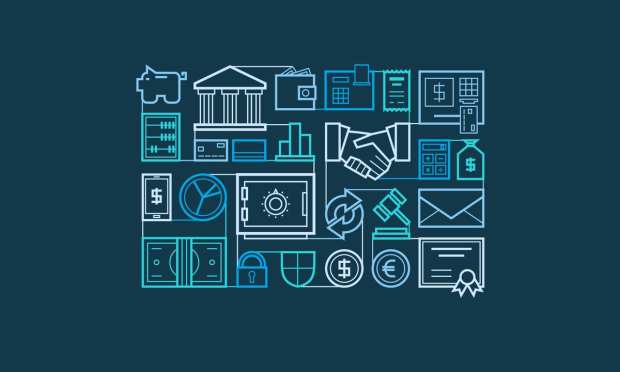NCR’s Doug Brown: Small Banks Merge Trust Equity With Tech To Drive Digital Future

Community banks may have fewer resources and a lot less in the way of digital services to offer customers, but what they lack in tech they more than make up for in customer loyalty and trust.
At a time when many have wondered if the technological limitations and conventional operations of community banks and credit unions (CUs) could threaten their existence, at least one industry expert said the so-called little guys have one distinct advantage that’s often overlooked: trust.
In a conversation with PYMNTS’ Karen Webster, NCR President of Digital Banking Doug Brown said those prognostications of doom don’t factor in the significant trust advantage community banks and CUs frequently enjoy compared to their larger rivals.
While larger banks and FinTechs are always able to buy more tech or launch new digital features, this trust equity, as Brown called it, is something that cannot be bought. To that point, the great digital shift may actually be “their opportunity to shine,” provided they are powered by the right tools to fully embrace the new moment.
It’s an effort Google and NCR are now taking on together, with their just-announced global strategic partnership that will see NCR expand the cloud availability of its Digital Banking software portfolio, including NCR Channel Services, as well as its card and payments processing platform NCR Authentic.
Google And The Cloud
NCR, Brown said, is far from new to the cloud — the firm has worked with Google, AWS and even Azure at times as it has transitioned from a firm mainly known for its hardware solutions to an “as-a-Service” firm offering financial institutions (FIs) the ability to leverage the cloud on demand.
“The Google approach for us is a big enablement,” Brown said.
While digital banking was already there, “Now we’re just going to bring that capability faster with the Google partnership, along with other applications,” Brown explained.
He said this strategic partnership will give NCR the dynamic flexibility it will need for the delivery and configuration of myriad services for FIs at a much higher level than it has been able to provide in the past. That upgrade is helping NCR accelerate its conversion to an “as-a-Service” firm, allowing it to more efficiently and effectively serve clients.
And eventually, he said, the company will find ways to iterate within the market to offer customers a better variation on the services toward which they are already gravitating.
Buy now, pay later (BNPL) offerings present just such an opportunity point, he said. Webster noted that FIs seem to have a genuine opportunity to move into this segment and potentially reinvent how BNPL, as well as other alternative credit products now on the rise, work simply by tapping into what they already know how to do quite well: extending credit to worthy borrowers.
It’s a potential that exists in BNPL and a host of other innovative arenas, where banks and other traditional financial services providers have a built-in advantage in improving the segment.
That will take some time to surface in the market, as financial firms armed with tools need time to ingest them and determine the most effective ways to leverage them in a rapidly reforming market, Brown said. Once ingested though, the power of what will be unleashed from the segment will be quite impressive.
“The sky’s the limit in terms of what we can effectively fuse together,” he said. “We could see buy now, pay later opportunities, which banks and credit unions are interested in advancing into becoming something more like open-to-buy.”
Consumer Choice
Open-to-buy — a typical part of the B2B shopping world largely leveraged by merchandise buyers — can and likely will be adapted for consumer sales conceptually made possible by a “rapidly advanced data ecosystem,” he said. That can enable traditional players to build the best-in-class, easiest to use and easiest to manage versions of financial innovations that consumers are increasingly expecting from FIs.
The digital conversion has come, and it shows no sign of reversing, he said. And consumers aren’t abandoning the physical financial services experience wholesale, as some predicted they would. Much the way they are returning to stores, they are returning to bank branches, albeit less often than they once did. It’s primarily digital and better with digital, but it’s not a digital-only world for banking.
He said the focus for NCR and its partners at Google isn’t to force banks to abandon the physical world — their customers don’t want them to — but to expand their menu of choices for interaction so the choice is in consumers’ hands. Maybe it’s physical, maybe it’s digital, maybe it’s an alternative form factor involving something really noble, like an interactive virtual teller with some locker-type infrastructure.
“I think there’s an evolution going on, and customers are signaling that what they want increasingly is the best of both worlds,” Brown said. “And that’s both as in two, physical and digital, and not being forced to choose just one.”
